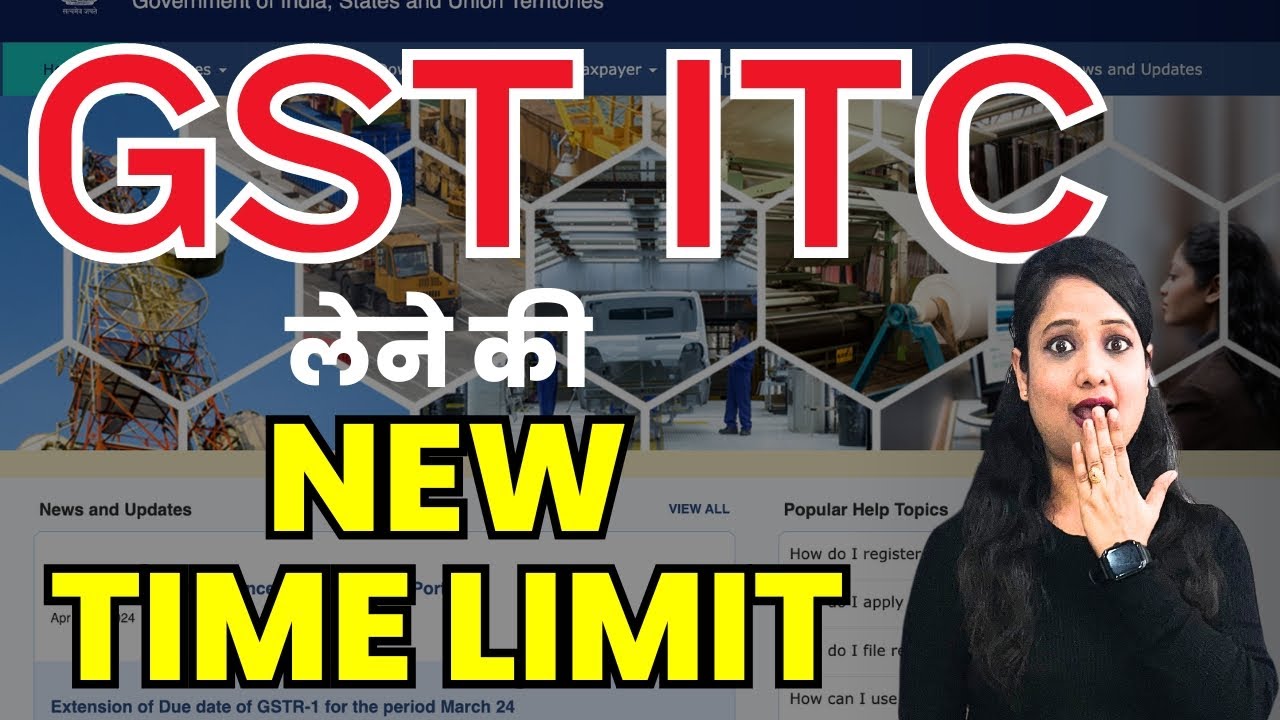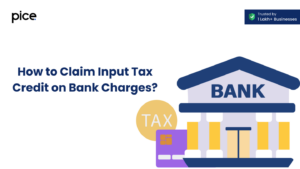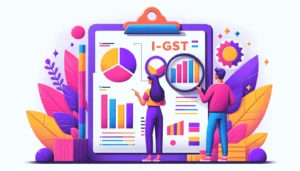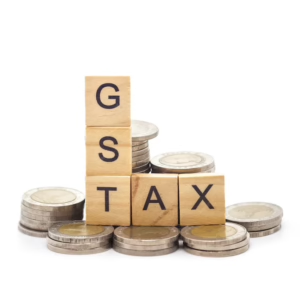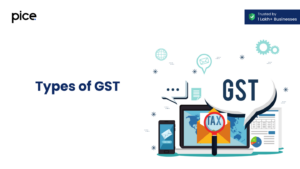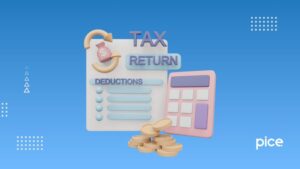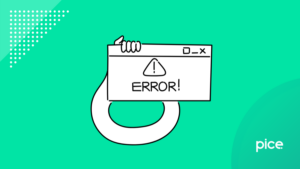Refund of Input Tax Credit Under GST
- 30 Aug 24
- 13 mins
Refund of Input Tax Credit Under GST
- Understanding Input Tax Credit (ITC) Under GST
- Eligible and Ineligible ITC
- Eligibility for Claiming ITC under GST
- Procedure for Claiming ITC under GST
- Time Frame for Claiming ITC under GST
- Reversal of ITC
- ITC Reconciliation Process
- Required Documents for Claiming ITC
- Cases That Allow Refund of Accumulated ITC
- Cases That Do Not Allow Refund of Unutilised Input Tax Credit
- Time Limit and Frequency for Claiming Refund of Accumulated ITC
- Steps to Claim the Refund of Accumulated ITC and Processing
- Calculation of the Maximum Refund Amount of ITC Unutilised
- Cases That Allow Provisional Refund
- The Bottom Line
Key Takeaways
- Input Tax Credit (ITC) allows registered businesses to offset GST paid on purchases against their GST liability, reducing overall tax burden.
- Eligibility for claiming ITC under GST requires valid documentation, receipt of goods or services, and payment of GST by the supplier.
- Certain goods and services, like those used for personal purposes or exempt supplies, are ineligible for ITC claims under GST.
- ITC must be claimed within the earlier of the last date of filing the annual return or by November 30th of the following financial year.
- ITC refunds are available for unutilized credit in cases like exports and inverted tax structures, with a specific calculation method to determine the maximum refund amount.
Under the GST regime, the Input Tax Credit (ITC) helps taxpayers reduce their tax liability. However, you can claim a refund of the input tax credit following the right steps. This blog elaborates on the eligibility criteria for an ITC claim, the documents required and the reconciliation process. Further, it highlights everything that you need to know about input tax credit refunds like the relevant period, maximum refund amount calculation and tax refund process in detail.
Understanding Input Tax Credit (ITC) Under GST
Input Tax Credit is the GST that a registered or taxable person pays for the purchase of goods and services utilised for the furtherance of business. It offsets the GST liability or tax burden on the registered person on the supply of goods and services.
For instance, if you are a registered taxable person, and you paid ₹15,000 in input tax for the purchase of goods and services. Further, you collect ₹25,000 as output tax on sales of goods and services. Thus, your net tax payable is ₹25,000 - ₹15,000 = ₹10,000.
Eligible and Ineligible ITC

There are certain input tax credits that do not allow claims. The restricted input tax credits are as follows:
- GST is paid on conveyance and motor vehicles if you do not use them for transportation of passengers or goods or for training purposes.
- Food and beverages, beauty treatment, outdoor catering services, healthcare services, plastic and cosmetic surgery are ineligible. However, if these are used to make outward supply or mixed and composite supply, these become eligible.
- Membership fees of a club, fitness and health centres are ineligible for ITC credits.
- Home travel concessions and travel allowances for vacations provided to employees are ineligible.
- If a non-resident taxable person receives goods and services it is ineligible. However, goods and services on which Integrated Goods and Services Tax (IGST) is paid are eligible.
- When a registered person uses goods and services for personal use, it is ineligible for ITC claims.
- Stolen, destroyed, lost, written off, disposed of goods, gifts and cost-free samples are ineligible.
Eligibility for Claiming ITC under GST
Claiming ITC under GST requires meeting certain eligibility criteria. Let us take a look at such criteria you must satisfy to qualify for an ITC claim:
- Possession of tax invoice: The registered person or claimant needs to possess a valid tax invoice or a tax document reflecting tax payment to claim ITC credit.
- Receipt of goods or services: The registered person has to receive goods and services even in cases where billing and shipping addresses are different.
- Actual tax payment: The supplier needs to pay the tax amount before claiming input tax credits.
- Presenting return: A registered person should furnish return filing documents to claim input tax credit.
- Lot-based Eligibility: If you receive inputs in lots or instalments, you need to claim ITC after receiving the last lot or instalment of inputs.
- Timely Payment to Supplier: The buyer needs to pay the supplier the invoice amount and the tax within 180 days from the date of invoice issuance. Delays will result in addition to the recipient's output tax liability along with interest. However, for partial payments, credit will settle for the paid amount and not the entire or unpaid amount.
Procedure for Claiming ITC under GST
Understanding the procedure to claim ITC ensures a seamless experience. Here are the steps to claim ITC under GST:
Step 1: Declare your input tax credit and output tax liability by filing a monthly return in form GSTR-3B.
Step 2: Verify the details of the input tax credit based on supplier-provided information.
Step 3: Reconcile the discrepancies, if any, in the following month’s return.
Step 4: Pay excess ITC with the chargeable interest and penalty, if any.
💡 If you want to pay your GST with Credit Card, then download Pice Business Payment App. Pice is the one stop app for all paying all your business expenses.
Time Frame for Claiming ITC under GST
All registered individuals can claim ITC based on whichever date is earlier between the two specified instances:
- The last date of filing annual returns for a particular financial year
- 30th of November of the following year
For instance, if you want to claim an Input Tax Credit for 2024-25, you can either claim it by the last date of annual return filing for 2024-2025 or by the 30th of November, 2025.
Reversal of ITC
Here’s what you need to know about when and why ITC reversals occur:
- Invoices not paid within 180 days: If the recipient fails to pay the due invoice amount within 180 days of issuance, there is an ITC reversal.
- Seller issues credit note to input service distributors: If a seller issues a credit note to an input service distributor, there is a reversal of reduced ITC.
- Inputs partially used for non-business purposes: If you use a part of inputs for non-business purposes or personal use or exempt supply, that part will exhibit ITC reversal.
- Capital goods partially used for non-business purposes: Partially used capital goods for non-business purposes, personal use and as exempt supply results in reversal of ITC for that part of capital goods in the definite proportion.
- Insufficient ITC reversal: If the total ITC on inputs for exempted goods and services exceed the ITC reversal amount in that year after filing the annual return, the difference gets added to output tax liability and interest is chargeable on the excess amount.
ITC Reconciliation Process
The input tax credit claimed by a registered taxable person must be the same as that declared by the supplier in GST returns. In the case of any discrepancy, both the supplier and the taxable person will be notified after filing form GSTR-3B. Further, when notified about discrepancies, it needs reconciliation for a seamless ITC credit.
Required Documents for Claiming ITC
The ITC claim process is backed by a documentation procedure. As a result, you need to possess the following documents to claim ITC:
- An invoice that the supplier of goods and services issued
- The debit note that the recipient receives and the supplier issues
- Bill of entry
- Invoices that suppliers issue under special circumstances such as a bill of supply instead of an invoice for an amount not exceeding ₹200 or when reverse charge applies
- Bill of supply that a supplier issues
Cases That Allow Refund of Accumulated ITC
Registered taxpayers can claim a refund of accumulated ITC in the following situations, considering that certain conditions are met:
- When a business operates with an inverted tax structure
- Exports made without payment of tax by reporting LUT (Letter of Undertaking) or bond
- Supply of services made to Special Economic Zone (SEZ) units or non-tax-paying developers
- Foreign embassies and international organisations on goods and services purchase
Cases That Do Not Allow Refund of Unutilised Input Tax Credit
Here are the cases that do not allow refund of unutilised ITC:
- When exported goods from India attract excise duty
- When a supplier claims duty drawback on paid excise duty or claims refund of IGST on supply
- If in an inverted tax structure, the output is nil-rated or GST-exempted
Time Limit and Frequency for Claiming Refund of Accumulated ITC
Under Section 54 of the CGST Act, a person claiming a refund of input tax credit or GST or interest paid needs to apply using form RFD-01 within 2 years from the relevant date. However, the relevant date varies based on the types of refunds. Here are the relevant dates that you need to know:
- For unutilised ITC for exports or SEZ supplies, the applicant needs to apply using the same form by the end of the tax period.
- Refund claims by embassies or international organisations need to be filed before the expiry of 6 months from the last day of the quarter in which you receive the goods or services. In such cases, taxpayers must use Form RFD-10 to claim the refund after submitting the GSTR-11 return.
Steps to Claim the Refund of Accumulated ITC and Processing
To simplify the GST refund process for accumulated ITC, you can file a single application covering multiple tax periods. Here’s a guide to help you navigate the steps for claiming your ITC refund efficiently:
Step 1: Fill in the sales invoice details and details of the outward supplies' invoice using the offline utility on the GST common portal.
Step 2: Log in to the GST portal and provide the details of turnover for zero-rated supplies or inverted-rated supplies. Enter the adjusted total turnover for the specific period.
Step 3: Net ITC details will auto-populate on the screen. You can reduce the values of CGST & SGST, IGST, or cess compared to what was reported in the GST returns for the respective tax periods. However, it will exclude ITC on capital goods, transition and refund under CGST rules 89(4A) and 89(4B).
Step 4: The screen will show the eligible refund amount.
Step 5: Choose the relevant tax period for the refund, indicate the ITC amount to be refunded and provide your bank account details for the refund transfer. Ensure you upload the required bank account details and supporting documents based on the refund type.
Step 6: Once the Application Reference Number (ARN) is generated, the refund application will be assigned to the Jurisdictional Refund Processing Officer for further processing.
Refund applicants can check the status of their application for refund indicating refund status under the ‘Track Application Status’ tab.
However, one must keep in mind the following factors while filing a refund application for accumulated ITC:
- The refund amount for each category—CGST, SGST, and IGST—cannot exceed the amounts recorded in the respective electronic credit ledgers.
- For goods supply, taxpayers must provide the Shipping Bill/Bill of Export/Endorsed Invoice No and the relevant date. For service exports, secure and provide a FIRC/BRC from the bank for receiving foreign exchange.
Calculation of the Maximum Refund Amount of ITC Unutilised
To find the maximum refund amount of unutilized ITC, use the two following calculation formulas. Here’s how to determine your eligible refund:
- Refund of Accumulated ITC on Account of Zero-rated Supplies Without Tax Payment (Exports and Supplies to SEZ Units or Developers)
Here is the formula for calculating:
Amount of Refund = [Net ITC * turnover of zero-rated supply of goods + turnover of zero-rated supply of services)] / Adjusted total turnover
- Refund of Accumulated ITC on Account of Inverted Tax Structure
Here is the formula to calculate:
Amount of Refund = {[Net ITC * (turnover of inverted rated supply of goods and services)] / adjusted total turnover} - Tax liability on inverted rated supply of goods and services
Cases That Allow Provisional Refund
Section 54(6) of the CGST Rule 91 allows provisional refund of unutilised ITC up to 90% with form RFD-04. Here are the cases that allow provisional refunds:
- Export of goods and services without payment of tax
- Supplies to SEZ units or developers without payment of tax
The provisional refund excludes provisionally accepted ITC under the CGST Rule 36 (4). It is issued within 7 days from the issue date of acknowledgement in RFD-02. However, this calculation might not be revalidated by the GST refund processing officer during the final review and settlement of the application in RFD-06.
The Bottom Line
Now that you know the process of how to claim a refund of the input tax credit, you can easily proceed However, ensure you claim your refunds and ITC within the time frame and due dates to avoid addition to output tax liability and chargeable interests. Additionally, one has to make sure that they possess all the documents for ITC claims for a seamless experience.







